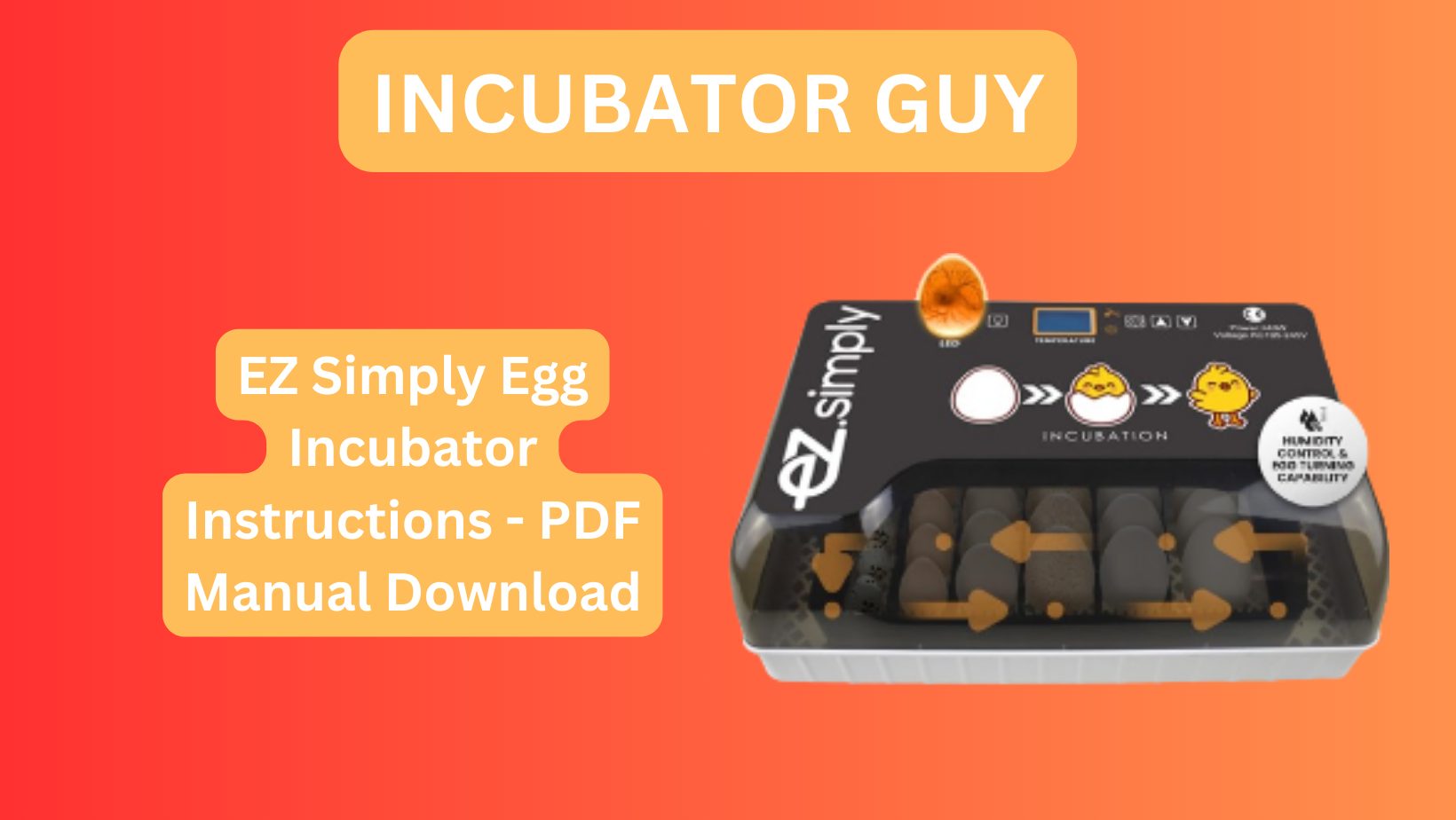Welcome to the world of egg incubation with the Egg Incubator – All-in-One Egg Incubators for Hatching Eggs with Automatic Egg Turning, Heat and Humidity Control. This user manual is designed to provide you with comprehensive instructions on how to use your incubator effectively, ensuring optimal hatching results for various types of eggs.
Download EZ Simply Egg Incubator Instructions
Click on the button to download
Product Overview
| Property | Value |
|---|---|
| Name | Egg Incubator – All-in-One Egg Incubators for Hatching Eggs with Automatic Egg Turning, Heat and Humidity Control – Chicken Egg Incubator – with LED Egg Candler |
| Material | Plastic |
| Brand | Little Giant |
| Capacity | 12 Fluid Ounces |
| Electric | Yes |
| Weight | 0.01 Ounces |
Key Features
Here are the features of the EZ incubator.
Integrated Design:
Fully automatic incubator with smart technology for temperature and humidity control, and built-in LED egg candler.
High-Quality Materials:
Made from durable ABS plastic for longevity and ease of use.
Stable Incubation Conditions:
Maintains consistent temperature and humidity for optimal embryo development.
Easy to Clean:
Removable parts for convenient cleaning between uses.
Perfect Size:
Designed to hold 12 chicken eggs, suitable for beginners and various other egg types.
Getting Started
Before using your egg incubator, please ensure all components are accounted for:
- Incubator
- Polyfoam
- Power cord
- Manual operation guide
- Egg tray
- Card strips
- Rotating shaft
Follow these steps for initial setup:
- Install the rotating shaft and ensure it matches the egg tray handle.
- Check that the fan, temperature display, function keys, and heater are all in place.
- Add water to preheat the incubator. Allow the machine to run for 20-30 minutes after checking, then start incubating when the environment temperature is below 20°C for better heat retention.
Operating Instructions
Here are some instructions to help you get started.
Temperature and Humidity Control
- Set and monitor the temperature precisely using the LED dashboard.
- Maintain humidity levels according to the hatching period. Refer to the instructions for controlling humidity during the hatching period.
- Ensure accurate temperature readings and adjust as necessary for optimal hatching conditions.
Egg Turning
- The built-in automatic egg turner rotates the eggs every two hours to prevent yolk settling.
- Stop turning eggs three days before hatch to avoid excess turning.
- Ensure proper egg orientation with the pointed side down.
Cleaning and Maintenance
- After each use, remove and clean the water tank, grid, egg tray, and top cover promptly to ensure proper operation.
- Use a liquid thermometer for accurate temperature monitoring. Avoid using digital thermometers as they may mislead temperature/humidity readings.
Hatching Process
- Select fresh, fertilized eggs for incubation.
- Ensure eggs are clean and free from deformities or cracks.
- Follow the recommended humidity levels and egg-turning procedures during the incubation period.
- Use an egg candler to monitor embryo development at various stages.
- Increase humidity and decrease temperature during the hatching period to prevent dehydration and facilitate hatching.
- Keep the incubator closed during the final days of incubation, except for water replenishment.
Additional Tips
- Store eggs with the pointed end down for at least 24 hours before incubation.
- Ensure the incubator is running for at least 24 hours before placing eggs for incubation.
- Maintain temperature at 37.5°C throughout incubation, with humidity levels adjusted as per the instructions.
- Regularly monitor temperature and humidity levels using appropriate tools.
- Keep detailed records of incubation parameters, including egg details, setting dates, and hatch results.
General Tips About Egg Incubation
- Egg cleanliness is crucial for successful hatching. Ensure eggs are clean and free from contamination before incubation.
- Proper temperature and humidity control are vital during incubation. Minor deviations may affect hatch rates and chick health.
- Maintain accurate records of incubation parameters for evaluation and future reference.
- Parent incubation may provide ideal conditions for hatching but may not be suitable for all species or individuals in captive conditions.

